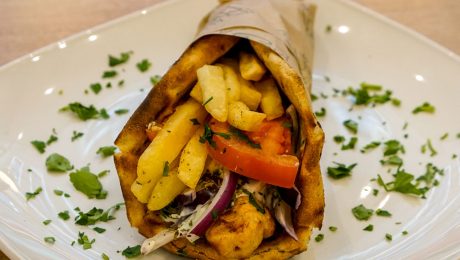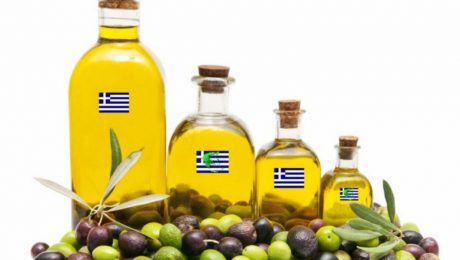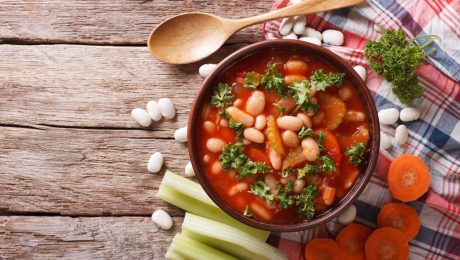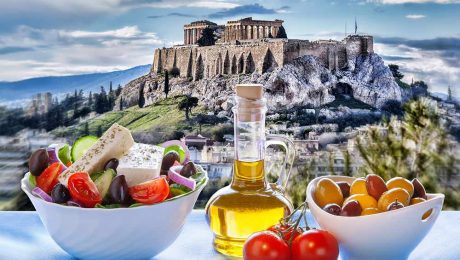A Greek Souvlaki Restaurant in London
The Greek Souvlaki
Souvlaki restaurants first showed up in Greece in Livadia in 1951, selling souvlaki on a stick and rotating gyros. Just so, the Greece cuisine has penetrated different parts of the world, allowing the fantastic experience of having a taste of the amazing recipes. Since eating out has become a recent order, Greek restaurants are around, where they specialize in Greek cuisine. Greek restaurants are fast gaining popularity in London compared to previously, with Souvlaki being included on their menu.
The ancient city of Greek is known for a number of historical events and occurrences. It is exciting to know that delicious, healthy cuisine for sure makes the list. One of the healthiest foods having strong flavours is the Greek cuisine. The Greek cuisine dates as far back as 4000 years ago, making it a huge part of the Greece culture.
One of Greece’s famous dishes is the Greek Souvlaki. The word Souvlaki is a generic term which means pieces of meat skewered with a small wooden stick, char-grilled and spiced up with salt, pepper, oregano. This popular Greek fast food is usually eaten whilst still on skewer so that it can be enjoyed hot. The Greek Souvlaki can be served with pita bread, fried potatoes, lemon, and sauces or even eaten on its own. The meat used can be pork, chicken, beef, and lamb, and sometimes fish. In places like the southern Greece around Athens, Souvlaki is commonly referred to as kalamaki or reed.
Simple Guide to Making a Souvlaki
Since Souvlaki passes for a fast food, it is super easy to make. All you basically require is:
- To make a quick marinade by mixing some olive oil, lemon juice, garlic, vinegar and some seasonings.
- You then pour that over the meat, mix well and leave the mixture to soak in the fridge for some time or even overnight.
- You need to skew your meat onto your skewers. Remember to soak your skewers at least 30 minutes before you are ready to start building skewers. After which you thread your pieces of meat onto the pre-sodden skewers and wait for say 10 minutes for it to get all golden and ready to be eaten.
- You can choose to serve your souvlaki with some grilled veggies. Well, the good news is there is no absolute way of making your souvlaki so you can choose to add spices and ingredients that suits you.
So even in London, you can get a greek souvlaki as good as the one made in Greece. Souvlaki is the food of the revolution against oppression. And they are also the most filling and also healthy meal you will ever have for under 5 pounds with simplicity, fresh ingredients and that homely feel. What then are you waiting for? Try the best souvlaki in London, get your souvlaki now…
- Published in IAGTM
Greek Olive Oil – The best in the World
The Benefits of Greek Olive Oil
Ancient mythology revealed that Athena, the Greek goddess of wisdom and Poseidon, the god of the seas, fought for the control of an unnamed Greek city, whose populace decided to honor the god who could give a better gift.
Poseidon struck the ground, causing salty water to come forth. However, Athena gave the people a city the gift of an olive tree. The Greeks hose Athena as their deity, and the rest is history.
Over the centuries, Greek olive oil has become a stable in the diet of millions around the world, and it has been the root cause of the “Greek paradox”- an idea that meals rich in quality fats can help a person healthy.
To wit, we take a look at some benefits of Geek olive oil:
It reduces the risk of cancer
Oleocanthal is a phytonutrient in olive oil, and it imitates the effect of ibuprofen in easing inflammation, and this helps it to reduce the risk of breast cancer. Some other olive oil components that are being examined for their effects on cancer include lignans and squalane.
It reduces cholesterol
Levels of triglycerides, LDL-cholesterol and cholesterol an also be reduced by Greek olive oil. However, at the same time, it doesn’t do anything to alter the levels of HDL cholesterol (in some cases, it might eve enhance them), which protects the body and prevents the formation of patches of fats.
Greek olive oil is rich in vitamin content
It is rich on antioxidants, especially Vitamin E. Among plant oils, Greek olive oil has the highest content of monosaturated fats, which don’t oxidize in the body. It is also low it polysaturated fats, which oxidize.
It causes reduced blood pressure
A regular intake of Greek olive oil can help you to reduce both diastolic and systolic blood pressure.
It helps with diabetes
It has been revealed that a diet that is rich in Greek olive oil, low in saturated fats and with a moderate carbohydrate content is one of the most effective approaches to the treatment of diabetes.
Greek olive oil helps to reduce the low-density lipoproteins, while also improving the control of blood sugar and enhancing the patient’s sensitivity to insulin.
It reduces obesity levels
Olive oil might be high in calories, but it has also shown to help reduce the levels off obesity.
It helps with reducing the risk of arthritis
The reasons for this are not completely established, but studies have shown that people who eat foods containing high levels of Greek live oil have a lesser likelihood of developing rheumatoid arthritis.
It boosts calcification and bone mineralization
A high consumption of Greek olive oil has also been known to help boost the calcification of the bone. It helps in the absorption of calcium and also aids sufferers in preventing the development of osteoporosis.
It reduces heart attack propensities
A recent study published in the New England Journal of Medicine revealed that the consumption of about 4 tablespoons of Greek live oil on a daily basis can lower your risk of heart attack, dying of heart issues or suffering a stroke
References
https://www.ncbi.nlm.nih.gov/pubmed/21443487
http://www.cnn.com/2013/02/25/health/time-mediterranean-diet/index.html
https://www.ncbi.nlm.nih.gov/pubmed/15642702
https://www.healthline.com/nutrition/foods-high-in-vitamin-e
- Published in IAGTM
Greek Beans and Legumes
Beans in Greek Cooking
What would the Greek-Mediterranean cooking be without the plethora of healthy, delicious dishes based on Greek beans and legumes? The most ancient legumes are the lentil, chick pea, fava bean, and vetch, or split pea. All of which are still widely consumed in soups, stews and baked casseroles all over Greece. Greeks traditionally eat beans at least once a week. Famed Greek giant beans (“gigantes”) and white beans of varying sizes grow well in the fertile wet soil of Greece’s rainy North.
In Greece, despite its hard times, war and occupation, people considered themselves lucky to have a bowl of watery bean broth, fasolada. Α rich in carrots, celery, onions, tomato and virgin olive oil. Fasolada is often cited as the country’s most emblematic national dish.
Salads are ever-popular tavern staples year-round. Such as black-eyed peas, and dips like fava, made with split yellow peas.
Following is a short list and description of some of the most popular beans and pulses on the Greek table:
- Broad beans. Greeks call them koukia. In spring, they come to market fresh, and are almost always eaten shelled in stews, especially with artichokes, and in omelets.
- Fresh beans. These include fresh beans, including string beans, butter beans, runner beans, fresh black-eyed peas, flageolets, and cranberry beans. Most fresh beans in the Greek kitchen are cooked as “lathera”. This means over low heat for a long time with tomatoes, potatoes, and a lot of olive oil. Fresh black-eyed peas, called ambelofasoula in Greek, make for a delicious salad, with a little garlic and some fresh herbs.
- Dried beans. These make for delicious, hearty winter fare as well as for great salads.
- Gigantes. To begin with they are the most popular dried beans, or giant beans, which resemble lima or butter beans but are bigger. Secondly, they are made into casseroles baked with tomatoes and other vegetables. Sometimes they are served up simply boiled with a little olive oil, lemon juice and oregano.
- White Beans. Other, smaller white beans are cooked into stews and soups. This is the national bean soup, which is a melee of navy or cannelloni beans, tomatoes, celery, onions, and often hot pepper.
- Black-eyed peas. Dried black-eyed peas are often dispelled by Greeks who have vivid memories of World War II. Since the humble black-eyed pea sustained them through years of hunger.
- Lentils. Lentils are also common in the Greek kitchen, used in soups and pilafs.
- Finally, yellow split peas. Greeks call the yellow split pea fava. It is the staple food on the island of Santorini. There are many preparations. The most common is to simmer the yellow split peas until they become creamy and dense, like mashed potatoes. This is a classic Greek dish, usually topped with raw olive oil and raw onions.
Healthy Legumes
Although Greeks consume many different kinds of beans and pulses, the oldest are no doubt the broad bean, the chick pea and the lentil, which have been savored all over the Mediterranean since time immemorial. Given the fact that pulses were the stable food of the poor and rarely formed part of lavish banquets. Legumes are said to be used throughout antiquity and constitute an essential dietary supplement, since they are an important source of protein. They serve as nutritious food for men and important source during famine. Some varieties of legumes were used medicinally in the Roman period. Legumes have the ability to fix nitrogen into usable form and makes it useful in the fields and in health.
You can always find these healthy hearty dishes in our restaurant from Monday to Friday as Special Dishes. You can even order them online from Deliveroo, Uber and Just Eat.
- Published in IAGTM
The Greek Cuisine
From one of the most ancient civilizations on earth comes simply prepared food that uses the best of what’s in season. Adding a little magic in the form of clever flavorings. Greece’s culinary tradition dates back hundreds of years and has evolved over time to absorb many diverse influences.
Many well-known Greek dishes are in fact part of the larger tradition of the food of the Ottoman Empire. Classic dishes include moussaka, börek and tzatziki having Arabic, Persian and Turkish roots. Other examples of dishes that can be traced back to ancient Greece include lentil soup, fasolada and retsina.
Greek cuisine uses some flavorings more often than other Mediterranean cuisines do. Such as oregano, mint, garlic, onion, dill and bay laurel leaves. Other common herbs and spices include basil, thyme and fennel seed. Parsley is also used as a garnish on some dishes. Many Greek recipes, especially in the northern parts of the country, use “sweet” spices in combination with meat, for example cinnamon, whole spice and cloves in stews.
The most characteristic and ancient element of Greek cuisine is olive oil, which is used in most dishes. It is produced from the olive trees prominent throughout the region, and adds to the distinctive taste of Greek food. The olives themselves are also widely eaten.
Greek food is simple, colorful and incredibly nutritious. In addition Greek food has a reputation for being heart healthy. This is because it uses olive oil, fish, lean meats, vegetables, herbs and grain. One example is the classic moussaka – a hearty dish made of layers of lamb and eggplant, smothered in béchamel sauce and cheese.
In all honesty, Greek Cuisine is so varied in its nature that it can very hard to describe and something best experienced firsthand!
Bibliography:
https://en.wikipedia.org/wiki/Greek_cuisine
http://www.toloukoumi.com/blog-greek-recipes/entry/history-of-greek-cuisine
- Published in IAGTM




